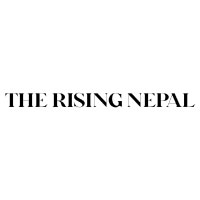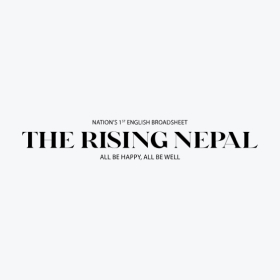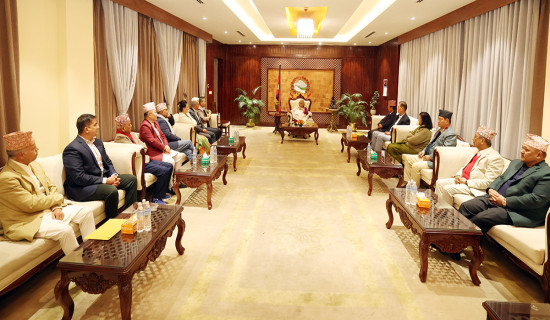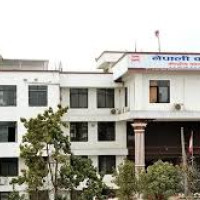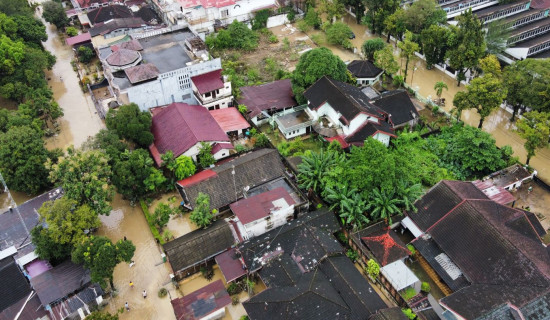- Sunday, 30 November 2025
Sustaining Nepal’s Nutrition Gains
For more than half a century, the United States Agency for International Development (USAID) has stood beside Nepal — not merely as a donor, but as a trusted friend in its journey from deprivation to dignity. Its steadfast partnership has turned stories of hunger and malnutrition into stories of recovery, empowerment, and resilience. Today, as major USAID-supported nutrition programmes come to a close, Nepal stands at a defining crossroads — a test of whether the remarkable progress of the past decades will become self-sustaining under our own leadership and financing.
From the remote hills of Jumla to the plains of Saptari, USAID’s work in Nepal has always been more than funding. It has been about building hope — through community-driven actions, evidence-based programmes, and local leadership.
National Vitamin A Programme
Launched in 1993 with USAID and UNICEF financial support and implemented by NTAG, the National Vitamin A Programme remains one of Nepal’s proudest achievements. Every six months, 52,000 Female Community Health Volunteers (FCHVs) reach 2.7 million children with life-saving vitamin A and deworming tablets. With over 90 per cent coverage and receiving international awards, including the Global Health Award, the programme has reduced child mortality. More importantly, it empowered rural women as frontline leaders in Nepal’s health revolution.
Meaning “Good Nutrition,” the Suaahara programmes (2011–2023) transformed how we think about nutrition. Implemented by Save the Children and Helen Keller International, they reached over 600,000 households across 42 districts. By blending health, agriculture, and hygiene interventions, Suaahara lifted the quality of life for thousands of families. Exclusive breastfeeding rose to a new height, and dietary diversity among children nearly doubled — results few countries can match in such a short time.
The ongoing USAID Integrated Nutrition Programme (UINP) continues this journey, but with a new direction — helping local governments institutionalise nutrition in their systems, budgets, and social behavior change initiatives. This shift from “project” to “ownership” is USAID’s most strategic and sustainable contribution.
The USAID has contributed to halving the stunting and underweight rates in two decades — one of the fastest improvements in South Asia. Infant mortality has fallen by 60 per cent, reflecting stronger health systems. Wasting and maternal anemia persist, reminding us that unfinished work still demands urgent national attention. These achievements are not just statistics — they are testimonies that progress is possible when global support meets local commitment.
Perhaps USAID’s greatest contribution is not in capsules, programmes, or grants — but in governance. By supporting the design and implementation of the Multi-Sector Nutrition Plans (MSNP I & II), USAID helped Nepal redefine nutrition as everyone’s business. Today, under federalism, local governments are carrying that torch through the Nutrition-Friendly Local Governance (NFLG) approach — a lasting testament that true sustainability begins when local governments take charge.
With major programmes phasing out, Nepal faces an enormous funding gap in nutrition. This is not merely a budget concern — it is a question of whether we allow the next generation to slip back into the shadows of malnutrition. But there are clear, achievable paths forward: Mainstream nutrition into all local budgets under the NFLG framework, establish a National Nutrition Fund drawing on taxes, corporate social responsibility (CSR), and matching grants, reward high-performing municipalities with performance-based grants and mobilise the private sector — from food fortification to workplace nutrition programs.
Nepal can also access transitional support from the World Bank, GFF, UNICEF, and ADB, while the Nepali diaspora can seed a Nutrition Endowment Fund — a patriotic call for every Nepali abroad to help nourish the nation’s children.
A Shared Commitment
USAID’s story in Nepal is not about aid — it is about shared humanity and shared progress. It is about mothers who no longer lose their children to preventable causes, and about communities that have learned to take ownership of their health and future.
Now, the baton is in Nepal’s hands. This is our moment to sustain and scale the progress, not as a dependency, but as a national mission. Encouragingly, we believe that USAID will give one more thought to finishing the noble job that started decades back that is a project dealing with saving the lives of the deprived and poor children of Nepal, whose only savior has been USAID. This renewed collaboration offers hope that the journey will go forward, stronger and more self-reliant than before.
“The future of nutrition in Nepal is not defined by who funds it — but by how strongly we, as a nation, commit to ending malnutrition once and for all.”
(The author is the executive director Nepali Technical Assistance Group (NTAG).


